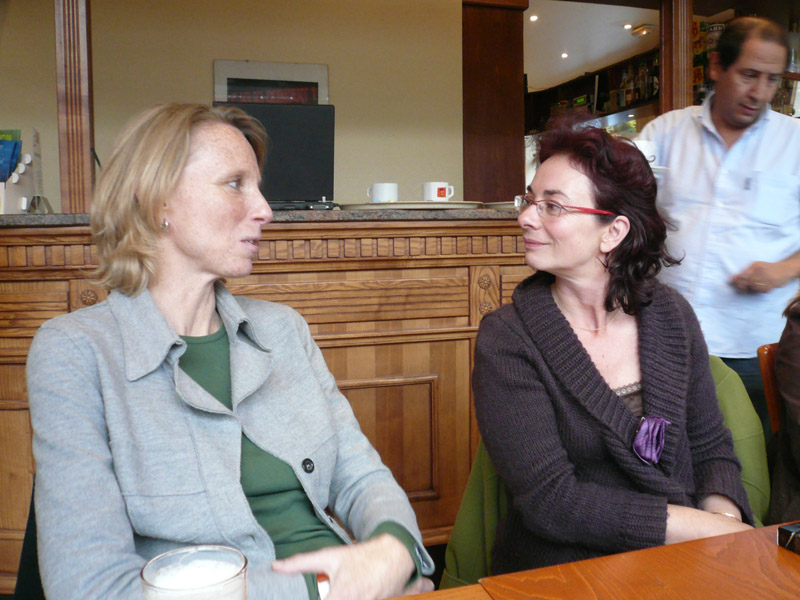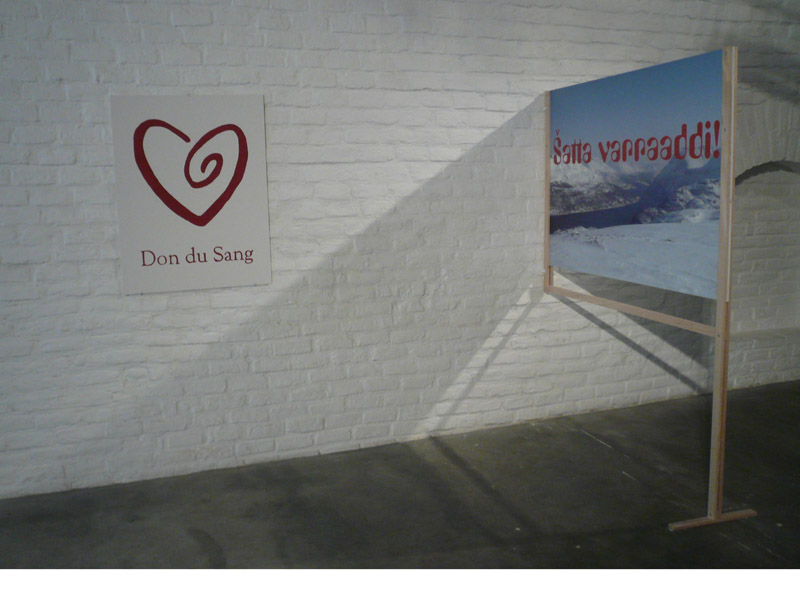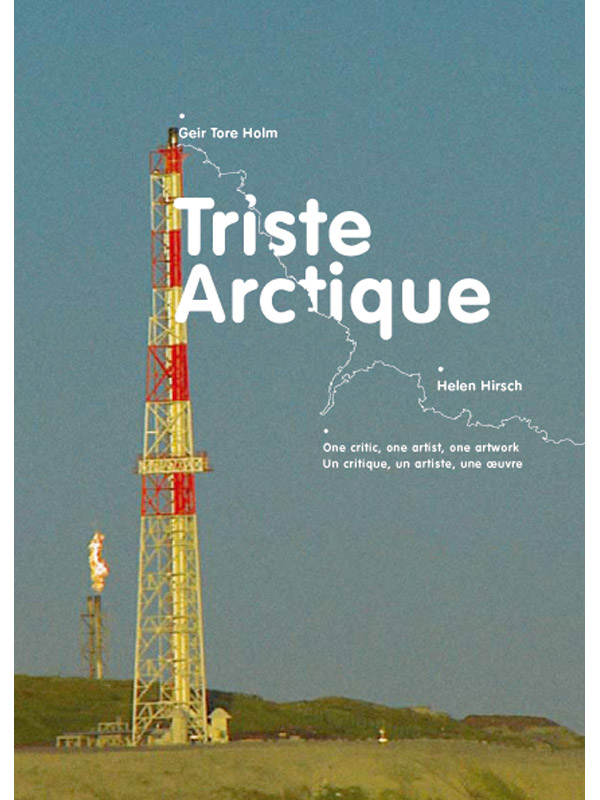residence / workshops / exhibition / publication
29 October – 14 December 2007
Apollonia venue, Strasbourg
Art critic: Helen Hirsch
Artist: Geir Tore Holm
Residence: Triste Arctique
Apollonia entrusted the Triste Arctique project to the art critic Helen Hirsch, who has chosen to present the cultural and artistic world of the Sami people whose territory spans the frontiers of Finland, Norway, Sweden and Russia.
She carried out her work in residence with Geir Tore Holm, a Sami by origin but born in Tromsø in 1966. He is an artist, an exhibition curator, writer, teacher and recently Head of project for the new Academy of Fine Art at Tromsø University College. Many of his projects reflect the question of the identity of the Sami minority, but not only. Being deeply concerned with the alarming ecological situation in the Arctic and the Barents Sea, the artist denounces the over-exploitation of natural resources in the region and reveals the nefarious impact on the quality of life of the local population.
Furthermore Helen Hirsch and Geir Tore Holm have been invited to take part in the Professional Master of Arts course on art criticism organized by the Art section of the Strasbourg Marc Bloch University. Students will be able to watch the mounting of the exhibtion and familiarise themselves with a little known and threatened culture.
Lecture with students of the Master course on art criticism (Strasbourg)
In the framework of the residence preparatory to the project “Triste Arctique“, the art critic Helen Hirsch and artist Geir Tore Holm met several times the students from the Master course on art criticism from Marc Bloch University in Strasbourg.
During the first meeting at the Marc Bloch University, students discovered the cycle “One Critic, One Artist, One Artwork” thanks to Helen Hirsch and Geir Tore Holm, who gave them the framework for the exhibition and the curatorial work to come.
The discussion was followed up at apollonia venue, where the artist more precisely presented his work and concepts, and the art critic shared her position towards contemporary art in general with the students.
After their meetings, each student accepted to write a critical text based on the final exhibition. They will be part of the publication following the project.
You will find below, Julie Portier‘s text, as a sample of students’ critical impressions…
“Which one of us guides the other one?”
“After consulting both parties, the artist on one side and the critic on the other side, our “verdict” on this “artventure” could be expressed by interchanging the terms of the title : one artist, one artwork, one critic ; one critic, one artist, one artwork …
This experiment, organised by apollonia, may reveal the complexity of a relationship that lies at the heart of our critical exercise.
In a private conversation, Helen Hirsch told us about something that sounded really like an “adventure”; an adventure during which she and the artist moved into the unknown and took risks… At first indeed, she did not know the works of the artist. For his project of exhibition, she could only cling to a mere hypothesis, the one of a bibliographical track (Levi-Strauss). Then begun a three-time waltz with the artist in which, alternately, each one tried to play the part of the leader. First, the critic imposed a theoretical direction on the artist, who appropriated it before disappearing without trace. The critic then had to rely on him. Finally, the artist reappeared with the work, which was displayed. While discovering the result of their work, Helen Hirsch reappropriated it in order to make her criticism.
Creation and criticism are, in today’s context of art, two united activities: the one is conditioning the other, and conversely. As the title of the project initiated by apollonia suggests, it seems that the artist and the critic, in a game of complicity and duality, are indeed part of the same team.”
Julie Portier
student from Master course on art criticism, Marc Bloch University, Strasbourg (France)
Exhibition: Triste Arctique
The strange and astounding universe presented by Geir Tore Holm through this exhibition, with the collaboration of Helen Hirch, is in fact situated upon the map of Europe, at the far northern reaches of our continent where Russia, Finland and Norway meet along the Barents Sea. It is a matter of the Saami people and of their often sorrowful history, today symbolized by the aggressive exploitation of natural-gas deposits.
But past being an artistic protest in favor of the ethnic minority of the Saami, the discourse and project of Geir Tore Holm have a universal range, inasmuch as they touch upon one of the foundations of our society, namely the difficult coexistence of all sorts of minorities with regard to dominant cultures. The artist demonstrates the extent to which this harsh reality contradicts politically correct intentions and the aforementioned peaceful cultural coexistence.
As a further step, Geir makes use of images devoid of all artifice, hand-crafted objects and the installation of a Saami ambience in order to assert the simple artistic gesture and pure creation in direct opposition to commercial marketing.
The dialogue between Geir Tore Holm and Helen Hirch underlines the basic principle of this cycle of operations One critic, one artist, one work, founded upon reciprocal exchange and the meeting of ideas beyond the production of a work and its mise-en-scène. This cycle brings into perspective the importance of writing as a means of mediation between the artist, the work and the public, but equally as an essential support for the crystallization of concepts, analyses and interpretations offered by critics, artists and works.
Dimitri Konstantinidis



